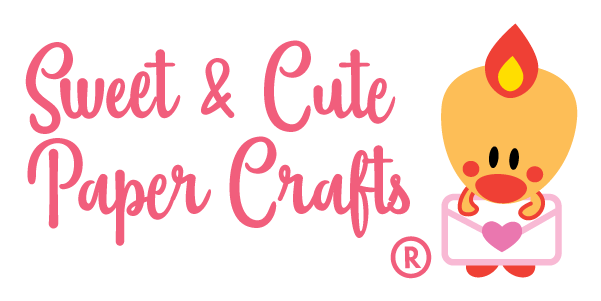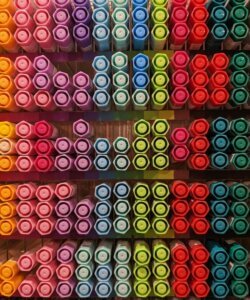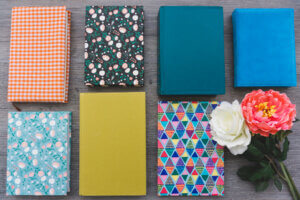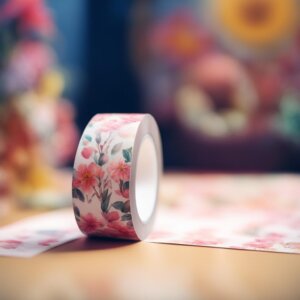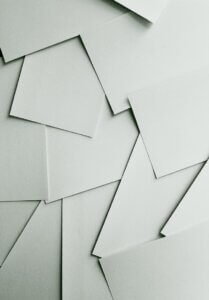Are you wondering how thick construction paper is, and how to choose the right material thickness for your project? In this guide, we’ll explore all the ins and outs of construction paper thickness and the differences between construction paper and other paper types.
So you’ll have the information you need to make the best choice for your project or activity. Let’s dive in!
How thick is construction paper?

Construction paper is a type of paper that is thicker and sturdier than regular paper.
This makes it ideal for a variety of arts and crafts projects, where you need a medium that can handle hot glue and heavy embellishments.
So, just how thick is construction paper?
If we use the literal thickness of this paper in inches or cm then the thickness of popular construction paper, such as Crayola construction paper, is around 0.00665″ thick with +/- 0.0002″.
However, inches or mm are never used to refer to paper and construction paper thicknesses.
The thickness of construction paper is usually referred to in GSM or lb.
GSM is grams per square meter.
Lb is the number of pounds 1000 sheets of paper weigh.
However, lb doesn’t always give an accurate representation of paper thickness.
That’s why GSM is a better metric for measuring the thickness of paper.
It’s much more accurate and precise.
The GSM measurement is also much more intuitive and easier to understand, as it directly references the weight of paper in grams.
It’s more suited to paper products that are sold in different sizes, because it takes the total area of paper into account.
That’s why GSM is a common way to refer to the thickness of paper and is especially useful when comparing different types of paper.
It’s important to keep in mind that while GSM is a useful tool for determining the weight of the paper, it doesn’t give you an exact thickness measurement.
However, a general rule of thumb is that the higher the GSM, the thicker the paper will be.
For example, the average weight of regular office paper or copy paper is around 90-120 GSM.
Construction paper thickness in GSM
The standard thick and heavyweight construction paper has a GSM measurement of 120 to 130 (65 to 80 lb).
This is thicker than the average office paper or copy paper, but not as thick as the thicker cardstock paper.
But this thickness makes construction paper ideal for projects that require a strong and sturdy base.
Such as 3D paper crafts and pop-up cards.
Lightweight construction paper, on the other hand, weighs around 100 to 110 GSM.
This makes it suitable for lighter projects that don’t require as much support.
Measuring the thickness of construction paper
If you want to know the literal thickness of construction paper in inches or mm you can use a caliper to measure how thick it is.
This is a tool that measures the distance between two points.
Caliper is designed to measure the thickness of objects and is widely used in many different industries, including construction, engineering, and manufacturing.
To measure the thickness of construction paper with a caliper, simply place the paper between the two points of the caliper and read the measurement.
How to measure the thickness of construction paper in GSM
Measuring the GSM of paper is an easy process.
Begin by obtaining a sample of the paper you wish to measure.
Weigh the sample in grams, then multiply the weight by 1000.
Next, measure the area of the sample in centimeters squared.
Divide the weight of the sample by the area of the sample to calculate the GSM.
To ensure accuracy, try to measure the sample several times and take an average of the results.
Is construction paper too thick for printing?
While construction paper is a great option for arts and crafts, it’s not the best choice for printing.
Due to its rough and pulpy texture, printing on construction paper can be damaging to standard printers and copiers.
The rough surface of construction paper can cause jams, smudges, and other problems that can ruin your print job.
In addition to that, the size of construction paper is also an issue.
Most construction paper measures at least 9″ x 12″, which is too large for most standard printers.
If you need to print text or images on colored paper, there are alternative options that are better suited for printing.
Colored paper for home printers and colored cardstock are both options that are smoother, easier to print on, and more compatible with standard printers.
How do I know when to use thick or thin construction paper?
When selecting construction paper, it’s important to think about what you’ll be using it for.
Thin construction paper is great for creating collages and art projects, since it’s easy to work with and lightweight.
On the other hand, thick construction paper is a great choice for projects that require more stability, like 3D models.
It’s also great for painting and drawing, since it won’t tear as easily.
If you’re not sure which type to choose, take a look at your project and decide which type would be most suitable.
If it needs lots of support, thick paper is your best bet.
But if you need something that can be manipulated easily, then go for thin paper.
Is construction paper as thick as cardstock?
Construction paper and cardstock are both paper-based materials that may sound similar.
However, there are a few differences between these two types of paper.
Construction paper is a type of colored and pulpy paper that is made mainly from wood pulp and dye.
As a result, its surface has a slightly rough and unfinished texture.
Construction paper is typically thinner and softer than cardstock. It comes in a variety of colors, plus it’s easy to crease.
All this makes it ideal for projects such as crafts, 3D cards, and other paper crafts, but you can’t print on it.
And cardstock is thicker, more durable, and is available in many colors, as well as white.
It’s better suited for printable projects like invitations and cards.
In addition to that, thin cardstock is easier to cut with Cricut than the pulpy construction paper.
The thickness of construction paper and cardstock can range from light weight to heavy weight, but typically cardstock is still thicker.
When selecting the right paper for a project, you need to consider the intended use and determine if construction paper or cardstock is better suited for the task.
Construction paper is often more economical and widely available, but cardstock is a better choice for intricate cuts and prints.
Alternatives to construction paper
Construction paper is a thick and fantastic material for a variety of crafts and projects. But it’s not always finctional.
If you need to print something or need a size that isn’t available, it might not be your top pick.
Luckily, there are plenty of alternatives that you can explore:
Color printer paper
Color paper for a home printer is one option.
This type of paper is typically made in smoother and thinner sheets and is designed to work with most standard printers.
This means that you’ll be able to produce high-quality prints without having to worry about the rough and pulpy texture of construction paper.
You’ll also be able to choose from a wide range of colors, making it easy to find the perfect match for your project.
Colored cardstock
If you’re looking for an alternative to traditional construction paper, colored cardstock is a great option.
Its thickness and durability make it ideal for projects that require permanence and sturdiness.
Plus, the vivid colors of colored cardstock make it perfect for scrapbooking, greeting cards, and other arts and crafts projects.
You can also use it to create fun and colorful bulletin boards that are sure to catch people’s attention.
One of the great things about colored cardstock is that it can be used in a variety of ways.
It has a smooth finish. So you can print important documents and flyers on it using a printer. And it’s versatile enough to use for all kinds of craft projects.
Compared to construction paper, it’s easier to cut with a cutting machine and is less prone to wrinkling and tearing.
Plus, it’s available in a wide range of colors, so you’re sure to find just the right hue for your project.
Poster board
If you’re looking for a sturdy and durable material for your craft projects, poster board can be a great alternative to construction paper.
Unlike construction paper, poster board is resistant to tearing and fading, making it a more reliable choice for projects that require longevity.
Poster board also comes in several colors, allowing you to unleash your creativity and create unique and eye-catching art pieces.
Its larger size sheets also make it a practical choice for bigger projects, such as making signs or creating displays.
Overall, poster board can be a versatile and practical choice for a range of craft projects.
To wrap up, construction paper is a top pick for many people in the art and crafting world because of its thickness and sturdiness. How thick is construction paper? Yoi can measure its thickness using weight, measured in grams per square meter (GSM). But, since construction paper has a rough texture, it’s not ideal for printing. If you’re looking to print something out, colored paper or cardstock might be a better choice. We hope this article gave you a good understanding of construction paper, including its thickness, weight, properties, and other options. Whether you’re an experienced artist or just starting out, understanding construction paper can help you pick the perfect paper for your project.
